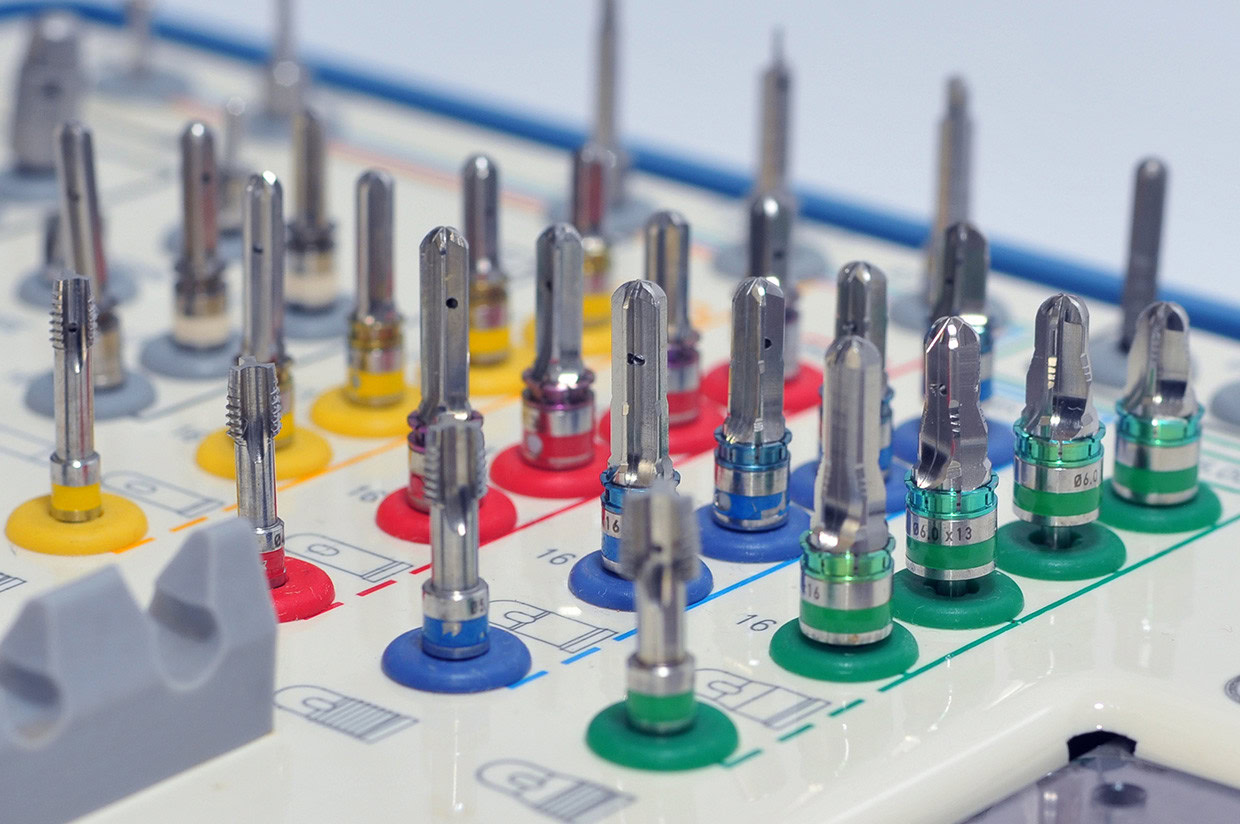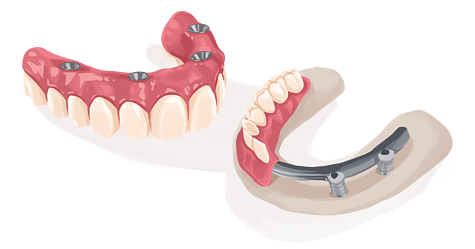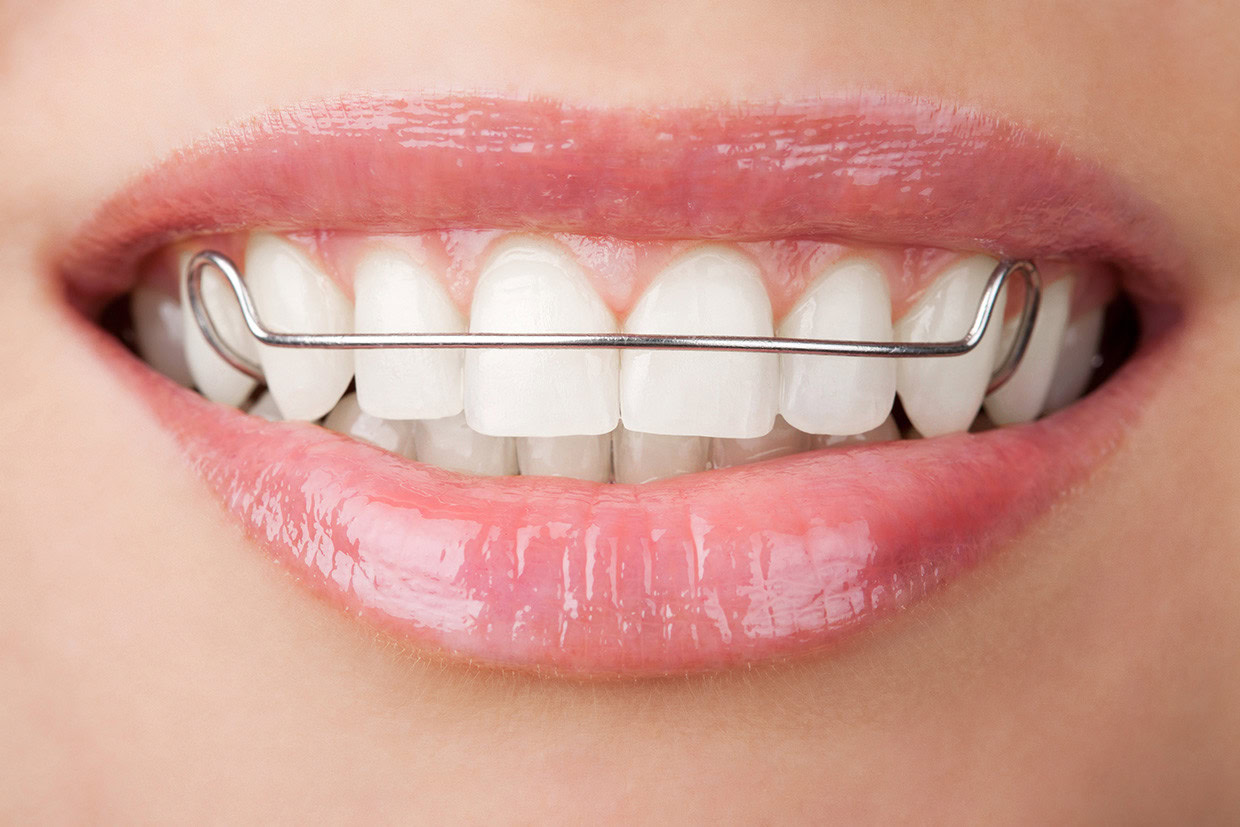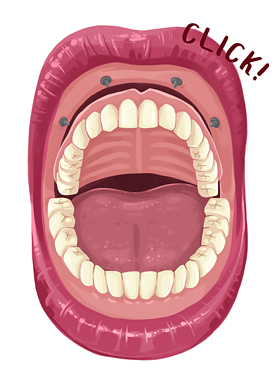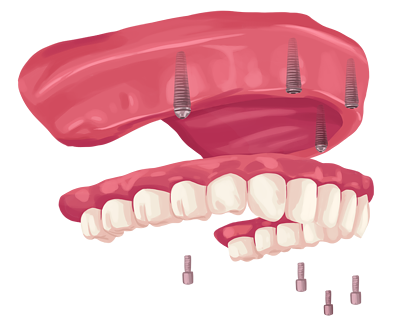G4 By Golpa Reviews
If you’re seeking the most qualified dental implant professionals to bring your smile back to life, look no further than G4 by Golpa Precision Implant Dentistry. Dr. Golpa and his staff perform more full-mouth restorations in one month than most providers will perform in their lifetime. The knowledge and skill that come from this kind of experience simply cannot be equaled.
Over 15,000 people can’t be wrong-
Every day, G4 by Golpa restores smiles and transforms people’s lives. That’s why we’re so proud of our dental implant solution. Our patients rediscover themselves in ways that go far beyond a beautiful smile.
Again, read the reviews, and we think you will see the pattern.
Judge for yourself………..
Which Are Better Dental Veneers or Dental Implants?
Dental implants are the answer in terms of aesthetics, as well as missing teeth. Veneers may not target the latter problem, but sometimes they are still the way to go. They are the less invasive option.
We have broken down the pros and cons of both solutions. The information below will hopefully help you in making the right decision.
Explore the factors that determine “which are better, dental veneers or dental implants” and find the optimal solution for your unique dental needs.
Dental Veneers
Veneers are tooth lining that can cover imperfect-looking dentition. There are three main types; resin, porcelain, and Lumineers.
Resin ones are the cheapest, but don’t look as natural and aren’t as durable as the other two. Porcelain ones are the most popular choice, and, just like Lumineers, they can last around twenty years.
Dental veneers are not meant as a medical fix; this procedure is cosmetic. If you have problems more concerning than the appearance of your teeth, your dentist might suggest implants.
Dental Implants
Dental implants are usually chosen when there are missing teeth or if the teeth are damaged beyond repair. They are artificial roots attached directly to the bone. Crowns in the chosen shape and color can be mounted on them.
Implants target many side issues, such as bone loss. If certain teeth are weaker than others you might avoid using them to break down food. This leads to bone resorption. Veneers won’t fix this issue.
If you have implants each bite will make the rod in the jaw put pressure on the bone. This stimulates it and prevents the body from thinking it is vestigial (not needed). Bone loss can make you look older, as the face sinks inwards.
Implants are a permanent solution, which means you will never have to repeat this procedure.
How do dental veneers or implants compare?
Both veneers and implants are popular solutions. The chances are you have probably heard about both treatments before finding this article. But which choice is right for you?
The reasons and conditions
In order to be a good candidate for veneers, you need to have generally good oral health. A good amount of healthy enamel needs to be present so that your dentist will be able to shave it down. Consider getting veneers if your teeth are:
- crooked,
- stained,
- cracked,
- chipped,
- broken,
- gapped,
- worn down,
- misaligned,
- uneven, or
- irregular in shape.
Implants can fix the issues above just as well. Almost anyone might be a candidate, even those suffering from autoimmune diseases, such as diabetes. You might also consider implants if your teeth are:
- missing,
- damaged beyond repair, or
- healthy, but you are willing to remove them.
Dentists will generally advise you against pulling out healthy teeth, but this might be a good idea if you are thinking about getting a full arch. The All-On-4 and the G4 by Golpa are such solutions.
Cost
The price you pay is a big factor in making the decision between implants and veneers. The final cost is highly dependent on the location and experience of the dental professional performing the job.
- $1,500 per tooth
- $24,000 full set
- $4,800 per tooth
- $29,500 full set
The prices above are based on research from numerous sources. They don’t include additional procedures such as X-rays.
The price for a full set of veneers takes sixteen (eight per arch) teeth into account. The price for a full set of implants assumes two fixed bridges, each on four implants (the G4 by Golpa).
Implants might seem expensive at first glance. It is important to remember, however, that they are a permanent solution. Veneers have to be replaced once every fifteen years (on average), depending on the type you get.
Both veneers and implants are pretty low maintenance once they are placed. You shouldn’t spend more caring for them than you would for natural teeth. It will still be important, however, to visit your dentist regularly!
Dental Veneers Procedure
Since veneers don’t require surgery, they can be installed in your mouth in as little as two appointments (if you are strategic about the schedule).
-
Initial visit
The dentist can inspect your mouth, do all necessary X-rays, and shave your teeth down in one day. He or she will also take an impression of your mouth.
-
Fitting the veneers
You can wear temporaries between these two appointments. By the next time you go into the office, your veneers will have returned from the lab. They will be fitted in your mouth.
-
Post consultation
You might need a third appointment to check if everything is okay.
Dental Implant placement is a more complicated process. You have to take into account healing time, which can take a few months.
-
Initial visit
You will meet for an initial consultation with X-rays. A treatment plan will be set up.
-
Bone grafting
You might need bone grafting. It can take a couple of months to heal fully from this procedure.
-
Implant placement
The dentist will drill into your bone and insert titanium rods. You will be sedated during this time.
-
Healing collar and abutment
After that, you will have a healing collar (for up to two weeks) and then the abutment (for up to six weeks).
-
Crown placement
The final step is placing the crown. The exact shape and color will be determined beforehand.
If you need a whole arch replaced you might want to consider the G4 by Golpa. All the steps described below are conducted within twenty-four hours.
-
Initial procedures
On the first day, you will have your CT scans, facial scans, and X-rays.
-
Consultation
All necessary measurements will be made and tooth shade and shape can be selected. You can discuss everything with the doctors.
-
Surgery
On day two you will undergo all extractions (if they are necessary) and the placement of dental implants. You will be without teeth overnight. Your smile will be fully restored within twenty-four hours.
Appearance
Implants and veneers can give a similar appearance after they’re done. If done well, it shouldn’t be noticeable that your dentition is not natural.
Veneers work on your existing roots, so they are more correctional. When it comes to implants the placement of the root and the shape can be decided from scratch. This solution might turn out more customizable.
It’s important to remember, though, that implants, being a surgical procedure, are dependant on the structure of your face. The dentist will have to take into account your sinuses (hollow spaces in your skull) and how thick your jaw is.
Durability
Both procedures are irreversible, which means durability is very important. While implants are a life-long solution, veneers will have to be replaced at some point.
Implants can stay in your mouth from around thirty years up to the rest of your life. The rate of failure is very low, around 5%.
Depending, of course, on what type you get, veneers aren’t mean to last for more than twenty years. This means you will have to be ready to spend that money again when the time comes.
What’s more, veneers are prone to cracking and chipping. Porcelain ones are less likely to break, but if they do they will probably have to be replaced. Resin veneers might stain and you will not be able to whiten them from home.
Both veneers and implants require proper care. If you don’t brush your teeth, floss, or keep up with your dental appointments you can end up just out the money. Worse, because your teeth will be either extracted or shaved down.
What should you choose between Dental Veneers vs Implants?
When making the final decision factors such as what exactly you are trying to fix, how many teeth are to be treated, or whether you want a full smile are going to be vital. Here is a summary of the most important pros:
- Not a surgical procedure
- Can be ready in a few weeks
- Cheaper initially
- Permanent solution
- Shouldn’t break or chip
- Cheaper in the long run
- Prone to damage
- Alternative methods only take 24 hours
If you decide that implants are your best bet you can consider the G4 by Golpa. It will provide you with a full set of implants in twenty-four hours.
There is only one payment, and all additional procedures are included. Schedule a consultation today!
How Much Do Dental Veneers Cost?
Veneers are a surefire way to cover up stained or crooked teeth. You have to be prepared, though, that a single tooth can set you back up to $1,800! And they might not last forever
The price is dependent on the state of your mouth and your location, but there are also universal factors. So which veneers make the most sense?
In this blog, we will discuss the costs about, how much do dental veneers cost and find the optimal choice for your radiant smile.
What is the cost per tooth for dental veneers?
Dental Veneers are great for discoloration and uneven teeth. Some materials address one issue better than the other. There are two main types, here’s how they compare:
- $800 per tooth
- Quite thin, little of the tooth has to be shaved down
- Last 5-7 years
- Can look fake
- Can stain, you cannot whiten them at home
- If they break, you can fix them easily at a small cost
- $1,500 per tooth
- Thick, a lot of the tooth has to be shaved down
- Last up to 20 years
- Very close to natural dentition, easy to match color
- Stain-resistant
- Very expensive to fix, you will probably need new ones
The table above represents average prices for a single tooth. You may be able to get a better deal if you’re going for more than one.
It is hard to say which type has the best price. It all depends on what you’re looking for: appearance, durability, or affordability.
What influences the dental veneers cost?
You may be thinking that prices you heard from your dentist are lower (or maybe higher) than what we have here. The prices above are based on solid research, but they are averages.
But there are numerous factors that can impact the price. The biggest one is the location, as costs can be very different from state to state. What’s more, you might even end up paying a different amount than your friend, whose dentist works in the same office.
It is also important to note that we provided numbers prior to any deductions; insurance, dental plans, or any others. It is up to your provider what they will cover, and up to your dentist what additional procedures you might need.
The total dental veneers cost includes more than just the placement
The prices above are not the only thing coming out of your wallet. There are some extra costs that you will have to take into account.
Oral examination
In order to get veneers at all, you are going to have to consult with your dentist. This means setting up an appointment with him or her to discuss your options. During this appointment, you will find out if you are a good candidate for this procedure.
X-rays and diagnostic molds
You will need at least one X-ray. The dentist needs to inspect the structure of your teeth and the surrounding tissues. Most likely this will be a whole-mouth radiograph.
Also a diagnostic cast might be made. This is a working model of what your mouth will look like after placement.
Dental cleaning
A prophy, or, dental cleaning, will most likely be necessary shortly before getting veneers. This will make sure there is no food debris or plaque on your teeth, as to avoid problems underneath veneers in the future.
Most likely you will be billed separately for all these procedures. What’s more, after getting veneers you must make sure to clean them and visit your dentist regularly. If they break or chip you have to address the issue fast before damage is done to the tooth underneath.
Does dental insurance cover dental veneers?
Insurance rarely covers dental veneers, as this is considered a cosmetic procedure. It is hard to convince policy providers to reimburse you for anything not “medically necessary”.
Even if you succeed, veneer placement and the associated costs are quite high. You are going to reach your limit very quickly. And there are still routine procedures you should be having throughout the year.
What’s more, veneers are not permanent, so there is a chance that you will have to redo them at some point. There are other solutions, like implants, which are considered the most permanent solution in restorative dentistry.
Do affordable dental veneers exist?
If you have missing teeth or need a whole arch replaced veneers might not be the best choice. A full set of veneers would set you back a lot. You may have heard of clip-on veneers, but they are nowhere near as comfortable.
Instead, consider the G4 by Golpa. It provides you with a full set of implants in twenty-four hours. There is only one payment, with no additional costs. Insurance might cover a portion of the price, especially if you are missing teeth.
The G4 is a permanent solution, which means never having to redo it. Contact us today!
When is it a good idea to get veneers?
Veneers are small pieces of lining placed on top of natural, shaved-down teeth. Upon hearing this, you may ask yourself “Do veneers ruin your teeth?”. The answer is: yes and no.
The tooth underneath remains alive and healthy. But a significant part of it does have to be filed down. And for the two most common types of veneers, composite and porcelain, the process is irreversible.
How do veneers work?
Veneers are generally a cosmetic procedure. They are recommended for teeth that are:
- discolored,
- chipped,
- worn-down,
- misaligned,
- crooked,
- irregularly shaped,
- affected by decay or disease,
- or injured in an accident.
There is no healing, as the procedure is non-surgical. You may get away with only visiting the dentist twice throughout the process. What’s more, you won’t have to go into the office more often than you did before getting them.
You are a good candidate if you don’t have missing teeth (in the place you want veneers), severe periodontal disease, or significant decay. There is a condition, though: your enamel needs to be healthy enough to support them.
What can you expect during the veneers process?
The process can turn out lengthier than you’d expect. It can take up to four weeks for the dentist to get veneers back from the lab alone. If you strategically plan out your visits with your dentist, the whole process can take about two months.
-
First dental visit
During this visit, the dentist will check the overall condition of your mouth. He or she will judge whether you are a good candidate for veneers.
-
Prophy
You might need a dental cleaning before getting veneers. Remember, they are stuck to your natural teeth, so you cannot have any plaque or food debris in your mouth.
-
Diagnostic wax-up/x-rays
Once you establish a plan of action with your dentist you will have your X-rays. A diagnostic wax-up might be made. It is a model of how your mouth will work after the procedure is complete.
-
Preparation
About half a millimeter of your tooth will be shaved down. An impression will be taken and sent off to the lab. You will have to wear temporaries before the next visit.
-
Placement
Once the veneers return from the lab your teeth will be cleaned and roughened, to make attachment easier. A special cement will be placed on your teeth. Ultraviolet light will help it harden quickly for a permanent attachment.
-
Checkup
You might have another visit with your dentist a couple of weeks later. He or she will check if the veneers are fixed to your teeth properly and whether there are no other problems.
This overview may give you a general idea. Your dentist might decide that some extra steps need to be taken, or that some stages have to be stretched out over several appointments.
What types of veneers are there?
Generally, they can be composite (made of resin) or porcelain. There is another option, a less invasive one, called Lumineers.
Some materials are more durable than others. For some, it is the appearance that is most important. There are different options, depending on what you are looking for. So, what’s the difference?
Composite
Composite veneers can be built directly on your tooth or (indirectly) in a lab. The latter take longer to install in your mouth.
In comparison with porcelain veneers, resin looks less natural and is less durable. This material stains similarly to your natural teeth and can’t be whitened).
On the plus side, composite veneers can be made very thin. This means removing less of your natural tooth’s enamel. They are also easy to fix if they were to crack or chip.
Porcelain
Porcelain is the way to go if what you’re looking for is appearance. Such veneers provide a look very close to natural teeth. What’s more, porcelain is stain-resistant, which means never having to worry about whitening.
These are also more durable than resin, however, if they crack or chip it is very expensive to repair them. They might even need to be replaced.
Lumineers
Lumineers are the only type that is reversible. They are the thinnest (about 0.2mm), which allows for shaving down a very small amount of the tooth. Their durability is comparable to that of porcelain.
The translucent quality works great to mimic enamel. The application process is pain-free and there is no need to wear temporaries. As with other types of veneers, they can be an alternative to whitening and light orthodontic treatment.
How long do veneers last?
Veneers, unlike implants, for example, are not designed to be a life-long fix free of maintenance. You can expect porcelain veneers to last around twenty years, while composite ones last around seven.
This is true, of course, provided that you take proper care of them. Generally, you should
- keep up good overall oral hygiene,
- address teeth-grinding, if that is an issue,
- not use teeth as tools, for example, to open letters,
- steer clear of coffee, wine, or tea,
- not smoke tobacco,
- and wear oral protection during sports and similar activities.
Veneers are prone to damage, as are the living teeth underneath. It is important to visit the dentist regularly after having them installed.
Pros and cons of veneers
Like with anything, there are pros and cons to veneers. They are great if you want to address cosmetic issues, however, this is only an option if your teeth are generally healthy. The cost of veneers is also something to consider.
- Allow you to keep your natural tooth
- Improve the appearance of your smile
- Procedure is non-surgical
- Low-maintenance, like natural teeth
- Easy and pain-free to install
- You must have healthy enamel
- Teeth must be shaved down
- Relatively expensive
- Prone to damage
- Won’t replace missing teeth
- Won’t fix bone loss or receding gums
- Most options are irreversible
If done well, veneers can look really great. They are not an option, however, if your teeth are damaged or missing.
Should I get veneers?
Veneers are a great solution for those with discolored or crooked teeth. But are they the best choice? There are problems that they cannot solve, such as missing teeth or bone loss.
What’s more, this solution is not life-long. They have to be replaced every few years, despite being relatively expensive.
Veneers can work if you want to fix up a single tooth. If you want to get a whole arch replaced, or if you are missing teeth, it is worth checking out the G4 by Golpa. You could have a full set of teeth in twenty-four hours!
It is a permanent solution for a beautiful smile. More often than not the G4 turns out more affordable in the long run. Schedule a consultation today.
Can You Get Dental Implants If You Have Diabetes?
If you have missing teeth and your diabetes is under control you are most likely a good candidate for dental implant placement.
Diabetes is a disorder that interferes with general health and daily life. The problems it creates include a wide array of dental issues, such as dry mouth, thrush, and, most importantly, loss of teeth.
It’s no secret that the best way to bring back a natural-looking smile is getting dental implants. So what should diabetics consider if they want to get them?
In this guide, we address the crucial factors and considerations for individuals with diabetes seeking dental implants, covering the common doubt, “Can diabetics get dental implants?” to empower informed decision-making for a confident smile restoration journey
What is diabetes?
Diabetes is a group of disorders that includes raised sugar levels in the blood. It affects the whole body, not just certain areas or organs. There are different types of diabetes, type 1 and type 2 being the most common.
In type 1 the body does not make enough insulin. In type 2 the body stops responding to it.
Symptoms include:
- being very thirsty or tired,
- urinating a lot,
- having problems with weight management,
- problems with blood circulation,
- inefficiency in fighting infection,
- slower healing and growing of bone.
These issues can be related to dental procedures, the implant process in particular.
How does diabetes affect oral health?
Those suffering from diabetes are more likely to develop gum disease and tooth decay. Dry mouth, a common issue, also means less taste sensitivity.
These issues can lead to tooth loss, and that in turn to changes in diet. The result is malnutrition, a serious problem for those who should be monitoring their diet closely.
Some issues are linked in a cause-and-effect way:
-
Difficulty in healing and fighting bacteria
-
More cavities and abscesses
-
Frequent antibiotic treatment
-
Thrush (a fungal infection in the mouth)
The fungus thrives in high-sugar environments, such as saliva of a diabetic.
Those issues can be even more problematic if conventional dentures are worn. Those can be tricky due to dry mouth and issues with bone growth (conventional dentures do not provide stimulation).
Another common problem is inflammation caused by friction between the denture and gums. If you are a diabetic with missing teeth, conventional dentures might not be the best choice for you.
You should always replace missing teeth, otherwise, your diabetes could become worse.
Should you get dental implants if you have diabetes?
Getting implants really is an idea worth considering, especially if you have diabetes, as they can help aid some of the issues inherently linked to that disorder.
The great thing about them is that they provide a great deal of stability. Conventional dentures can lead to a starchy, soft menu.
If you have diabetes, you are probably more conscious of your diet than the average person and know this could make the problem worse. Dental implants enable you to bite and chew more comfortably.
They also stimulate the bone and prevent loss. In order to get implants installed the bone has to be thick enough. If it isn’t, the patient must undergo bone grafting. Provided your diabetes is well-controlled, this procedure is as safe as for other patients.
Remember that, at least for the duration of the process, you must stop smoking, if you do at all. Smoking is always a contraindication to implant placement.
- Enable a varied diet
- Stable and comfortable in the mouth
- Prevent loss of bone
- Less inflammation and smaller risk of infection than regular dentures
- Control over diabetes is vital
- You have to undergo antibiotic treatment
- Cannot be a smoker
Implant success rates in diabetic patients
When considering tooth replacement you may ask yourself: are dental implants safe for diabetics?
Yes, they absolutely can be. If diabetes is under metabolic control, it is not a contraindication.
Researches have shown that the rate of dental implant survival in diabetic patients is similar to that of healthy patients (up to 95%). One of these studies presents a wide review of many cases. These include both type 1 and type 2 diabetes.
On the other hand, if your diabetes is poorly controlled you might have issues with impaired osseointegration . This means implants will not fuse well with the bone. During the first year, this process is slower in diabetic patients. There is no difference after this period, even with increased HbA1c values.
You may also have heard of peri-implantitis, an inflammatory process connected to dental implantation. It involves loss of bone and inflamed soft tissue. It is not inherently linked to diabetic patients, but it is a possibility with elevated HbA1c values (over 7%).
The general rule of thumb is that the smaller the amount of implants, the better. Implants are less likely to fail if the bone is not as manipulated.
Do diabetics have to take extra steps when getting dental implants?
If you are interested in getting dental implants, you should be aware of the considerations that affect you as a diabetic. First of all, you should inform your dentist about several things:
- the type of diabetes you have,
- the medication you are taking,
- and your general lifestyle.
Prior to surgery, you will have to make sure your sugar levels are good. If they are not, you should postpone any dental procedures other than acute infections such as abscesses.
The most common solution for patients with diabetes is the All-On-Four method, which includes implant placement.
If you are reluctant we may have an even better solution for you.
Try G4 even if others refuse
The G4 by Mike Golpa is a technique very similar to the Ao4 method. The biggest difference is time. The G4 provides you with a full set of implants in 24 hours whereas the all-on-four can take months.
Each candidate has individual needs and circumstances. Dental experts at Golpa will assess what the best choice is for you. They might recommend the perfect solution even if you had no luck finding it elsewhere. Consult with us today!
How Much Do Snap-In Denture Implants Cost?
Do you feel like laughing, coughing, or sneezing have become a challenge since replacing your natural teeth? It can turn out to be a challenge to find a comfortable yet reasonably-priced alternative to conventional dentures.
Are snap-in dentures implants and cost considered as the most affordable solution when you want to replace missing teeth?
What are snap-in dentures?
Snap-in dentures combine the advantages of dental implants and conventional dentures. They are sometimes called implant-supported dentures or overdentures and are a more permanent alternative.
The denture is supported by metal posts implanted in the jawbone and not just by the gums. Bone grows around the implants that stimulate it and prevent loss (a common problem with tooth-replacement). This means saving more money, since you don’t have to make replacements as often.
Overdentures provide the user with 40-50% of their chewing ability (compared to natural teeth). They are reported to last five to ten years.
Are snap-in dentures for you?
Overdentures were designed for those who are missing teeth or are suffering from tooth decay, but they might not be the right choice for everyone.
The jawbone must be fully developed, as there must be enough bone to facilitate the implant. It is recommended for adults and seniors.
Candidates must present good overall oral health. They must also be non-smokers, as cigarettes increase the risk of failure.
If the implant fails it can be redone, however this is not usually recommended. The success rate of 95% applies to first-time implants only. It might be more advisable to choose a different type of denture.
Pros and cons of snap-in dentures
If you are considering this procedure you should be aware of the common problems with dentures reported in patient reviews.
Snap-in dentures do not trigger the gag reflex and will not slip out by themselves, but they do require regular maintenance, nightly removal, and cleaning. They do not cover the roof of the mouth, allowing for more taste sensitivity.
They can prevent bone loss, but they require a surgical procedure. The process may take up to six months.
While snap in denture implants are more cost effective than regular dentures, they can still turn out to be pretty expensive.
- More stable and easier to speak with than conventional dentures
- Won’t slip out while you eat, drink, or sneeze
- Do not trigger the gag reflex
- Stimulate bone growth and prevent loss
- Must be taken out, cleaned, and stored
- Involve a surgical procedure
- The process may take around six months
What does the snap-in-denture procedure involve?
The process can last up to six months. It involves surgical procedures and multiple visits to the dentist. Here is a general overview of what you might expect:
-
Initial consultation
The dentist takes X-rays of the mouth to determine the state of the bone and the location of the sinuses (air-filled spaces in the skull). Impressions of teeth and gums along with a 3D model of the mouth are then made. A mock-up of the denture is forged.
-
Treatment plan
It may turn out that some teeth need to be extracted in order to make room for the overdenture. A plan will be made according to individual needs of the patient.
-
Bone grafting
The patient may require bone grafting if the existing bone cannot accommodate the implants. It can take four to twelve months to fully heal from this procedure.
-
Dental implant placement
Titanium rods are inserted in the front of the mouth (there tends to be more bone in the front than in the back) while the patient is sedated. Bone will then grow around the implants during a period of up to six months. Temporary dentures can ease the discomfort at this time.
-
Fitting the snap-in denture
The snap-in denture is modeled after the temporary one and can be magnetically attached to the rods protruding from the gums.
Each patient has their own unique situation. This may influence the general procedure.
How much are snap-in denture implants cost?
The overall cost of the overdenture relies mainly on how many implants are necessary. The dentist will assess the needs of each patient.
The location of the dental office also plays a role. Some patients choose to travel in order to find more economical prices outside of the US. The experience of the person carrying out the procedure and whether it is a surgeon will also influence the price.
Bearing all this in mind the costs of snap-in dentures range from $12,000 to $40,000.
Are snap-in dentures the same as All-on-4?
Snap-in dentures are easy to confuse with the All-on-Four method. These procedures require multiple visits, sometimes to multiple doctors, and months of healing. They require the patient to wear temporary teeth. They are, however, not the same thing.
With All-on-Four the patient does not remove the teeth on a day-to-day basis, as they are attached permanently. A fixed bridge supports the teeth on four titanium rods. The average cost for a full mouth is reported to be ranging from $49,000 to $120,000. This is considerably more than the cost of snap-in dentures.
The All-on Four is a low-maintenance, relatively permanent solution. All-on-Four teeth should be cared for as if they were natural. Snap-in dentures require more attention, but can be more cost-effective.
The All-on-Four method may require more implants, but both solutions involve surgical procedures.
All-on-Four is a procedure that takes one to two years, while snap-in dentures take up to six months to install in the mouth fully. The G4 by Golpa is a method that encompasses the advantages of these techniques. It remains the most affordable and time-efficient option.
Choose the best possible option
Our team along with Dr. Golpa have perfected the All-on-4 and snap-in denture procedures. They extracted the advantages to create the best solution; the G4 by Golpa. It provides the patient with 90% of their chewing ability and eliminates the need for taking the teeth out. You can brush them like natural teeth!
The whole procedure takes place in twenty-four hours in one location. It is performed by doctors specialized in this particular method. By limiting the visit to just one there is no room for hidden fees; prices start at $16,500.
Choose the best possible option and schedule a consultation or chat with one of our consultants.


